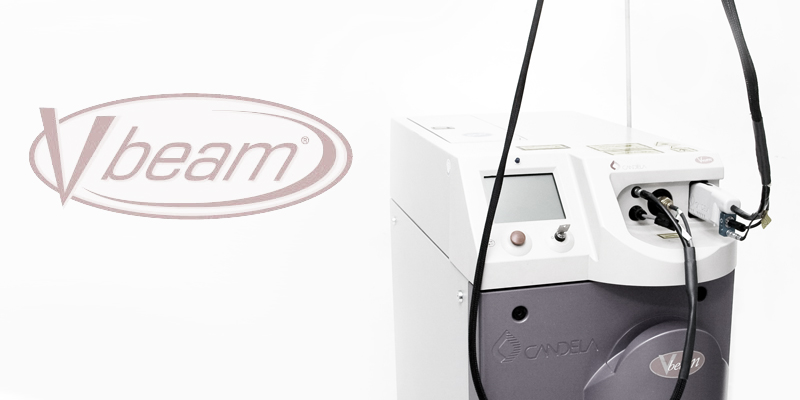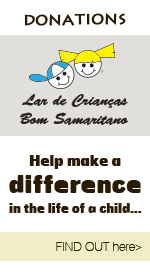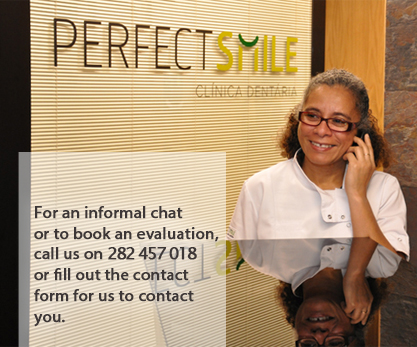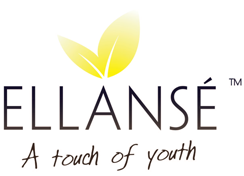 Candela Vbeam I Vascular Laser
Candela Vbeam I Vascular Laser
The Vbeam pulsed dye laser system is designed to safely treat a multitude of vascular skin conditions. The Vbeam is a non-ablative laser that produces an intense but gentle burst of light that selectively destroys the blood vessels of your vascular lesion(s), without damaging the surrounding skin and tissue.
The Vbeam can effectively treat the following skin conditions: rosacea, facial veins, leg veins, scars, psoriasis, red birthmarks (hemangiomas and port wine stains), angiomas, Poikiloderma of Civatte (uneven coloring of the neck and chest), venous lakes, red stretchmarks and warts. The Vbeam is also a wonderful tool for treatment of wrinkles (skin rejuvenation).
Taking the Red Out
Rosacea (pronounced roh-ZAY-sha), is a common inflammatory skin condition that usually only affects the face and eyes. Characterized by redness, pimples, and broken blood vessels, Rosacea is more common in fair-skinned people. It is often mistaken for adult acne.
Vbeam Uses:
- Acne Scars
- Rosacea
- Port wine stains
- Facial and leg telangiectasias
- Angiomas
- Hemangiomas
- Poikiloderma of Civatte
- Venous lakes
- Warts
What's causing the redness in my skin?
Redness is caused by broken or inflamed small blood vessels called capillaries. This redness shows through the epidermis and draws attention to acne scars, Rosacea, spider veins on your legs and the tiny broken veins on your face called telangiecstasia.
How does the Vbeam Laser remove redness?
The Vbeam laser light penetrates the skin and is absorbed by the red pigment in these small blood vessels. This absorption results in heat and the heat coagulates the vessel. Because it is now shrunken and no longer carries blood, the redness goes away.
- Rosacea - control flushing and redness by sealing tiny veins.
- Scars - removes red from acne scars, injury scars or red surgical scars.
- Facial veins - enlarged & broken veins on the cheeks and the nose.
- Leg veins - quickly zaps close-to-the-surface spider veins.
- Red birthmarks - hemangiomas and port wine stains.
- Poikiloderma of Civatte - diminishes uneven coloring of the neck.
- Stretch marks -helps blend "new" stretch marks that are still red.
- Angiomas -removes the tiny red spots that can appear anywhere on the body.
- Venous lakes - helps shrink this dark blue vascular "bubble" on the lip, face or ear.
- Periorbital wrinkles - spurs collagen re-building around the eyes
- Warts and non-cancerous growths.
Will my skin be cut or raw?
The Vbeam, made by the well-known Candela Corporation, is a "non-ablative" laser. This is an important distinction. Non-ablative lasers do not affect the top layer of the skin (the epidermis) but actually do their work at deeper levels where the source of the problem lies. There is no cutting, no burning and no removal of skin as with ablative lasers.
Vbeam's special protective cooling
Candela uses a patented system called "DCD", Dynamic Cooling Device, that instantly hyper-cools the skin surface before the laser beam is activated. This makes the treatment more comfortable and protects the epidermis.
Patient Guidelines
Instructions For Skin Rejuvenation Treatments
Precautions Before Your Laser Treatment
Avoid direct exposure to the sun. A sun screen of SPF 30 or greater should be used for casual sun exposure for several months before and after your treatment, or as long as you plan to continue treatment. Darker melanin or pigment from the sun may produce side effects or make the treatment less effective.
Care Of The Treated Area
The treated area may be pink/red for 4-8 hours after treatment. During this time you may feel a slight stinging sensation (similar to a mild sunburn) in the treatment area. This sensation usually subsides within 4-6 hours; cool packs or cool moist cloths may be applied to the area to reduce this sensation. Depending on the area(s) treated, you may notice some mild swelling which usually dissipates within several days. You can apply make-up or lotion to the treatment area the day after your treatment or when all signs of redness and heat have dissipated from the area.
We recommend that you apply a good moisturizing lotion to the treatment area twice daily for the duration of your treatments and for at least 2-3 months after your last treatment.
*It is important to remember that you may not see any significant changes for several weeks after the laser treatment.
Instructions For Treatment of Veins & Vascular Lesions
Precautions Before Your Laser Treatment
- Do not drink alcohol or take aspirin or an aspirin containing medicine for three days prior to and two weeks after your laser treatment.
- Avoid direct exposure to the sun. A sun screen of SPF 30 or greater should be used when exposed to the sun for several months before and after your treatment, or as long as you plan to continue treatment. Darker melanin or pigment from the sun may produce side effects or make the treatment less effective.
Care Of The Treated Area
The treated area may show a reddish/bruised discoloration. This will typically last 5-14 days, depending on what area of the body is treated. The treated area is very delicate and should be treated with care. Please read and follow these instructions.
- Discomfort or stinging may be evident, but usually lasts no more than 6-8 hours. A pain killer may be taken or ice packs applied during this period.
- If swelling occurs, ice water compresses may be applied. For facial swelling, sleep with your head elevated.
- Antibiotic ointment should be applied 1-2 times a day if there is any crusting or scabbing.
- If a crust or scab develops, allow it to fall off on its own. Do not pick at the area. Keep the area moist with the ointment until the crust falls off.
- Do not scratch or rub the treated area until all bruising or crusting disappears.
- Do not take a bath for the first 72 hours after treatment as the intense heat may cause additional discomfort. Showering is permitted. Do not soak in a hot tub until the area is healed. Do not rub the treated area with a face cloth or towel. Pat the area gently to dry so the skin is not disturbed.
- Avoid swimming and sports if any bruising is present to reduce skin irritation and infection.
- Do not apply make-up for 2-3 days, or as long as crusting is present. Using new make-up will cause less irritation.
- Avoid exposure to the sun. If sun exposure is expected, apply a sunscreen of SPF 30 or greater to prevent pigmentation changes until the lesion is healed. If the lesion has a scab or tissue changes, cover the area while exposed to the sun.
When the discoloration/bruising clears, there may be very little change in the vascular lesion. Improvement will take place slowly over a period of several weeks.
Frequently Asked Questions
What is the Vbeam laser and why is it safe?
The Vbeam Laser produces an intense but gentle burst of light that selectively destroys the blood vessels of your spider veins or other vascular lesions, without damaging the surrounding tissue. After laser treatment the surrounding tissue is left intact and normal pigmentation occurs. In fact, pulsed dye laser treatment is so safe that it has been used successfully for the treatment of port wine stains in infants and young children. The epidermis is protected during the treatment with the Dynamic Cooling Device, which sprays a cooling cryogen mist onto the skin before each laser pulse, which also increases patient comfort.
How does the Vbeam help improve the look of scars and stretch marks?
There is no current method or therapy that will completely remove scars or stretch marks. The Vbeam laser can improve the look and feel of most scars and stretch marks by stimulating collagen production in the deep layers of your skin. Multiple treatments are usually necessary to achieve improvement; the amount of improvement depends on the size and severity of the scar or stretch mark. Most patients notice improvement 6-8 weeks after their first treatment. Please note that although we have seen significant improvements using Vbeam laser, the laser will not completely remove scars or stretch marks.
Are there other ways to treat my vascular lesion?
For leg spider veins, some patients have received Sclerotherapy. This mode of therapy has been very effective in the past but can cause hyperpigmentation or pigment discoloration from 6 weeks to 24 months. Also, this mode of therapy can be painful and uncomfortable postoperatively, requiring specific care.
For other types of vascular lesions, such as Port Wine Stain birthmarks, stretch marks, scars, facial spider veins or warts, some patients have tried surgery, electrocautery, cryotherapy (freezing), or tattooing. These procedures often result in scarring or may leave an unsatisfactory result.
Other lasers such as the Ruby Laser, Argon Laser and CO2 Laser have also been used to treat vascular lesions. These lasers are not as specific to the destruction of the blood vessels in the vascular lesions and have resulted in scarring in many individuals. Because of the chance of scarring, the use of these lasers in infants and young children is not recommended.
If you have been treated by other modalities, which resulted in scarring or loss of pigment, the lesion may not respond as well with the Vbeam Laser Therapy. The scarring or loss of pigment may become more evident after treatment with the Vbeam.
Are there any reasons that would not make me a candidate for Vbeam therapy?
The Vbeam is not recommended for patients who are darkly pigmented. Because of the increase in skin pigment the laser will be less effective on damaging the blood vessels of the spider veins or other vascular lesion to be treated
The depth of penetration of the Vbeam is limited to vessels about 1.5mm in depth. Therefore, vessels deeper than this may not respond to the therapy. Additionally, blue vessels may not respond as well as red ones.
What should I expect for this laser treatment?
Treatment with the Vbeam may consist of multiple treatments. For facial veins, one treatment may be sufficient for clearance but additional treatments are not uncommon. These treatments occur on an average of every six to twelve weeks depending on the area and type of treatment.
The type of vascular lesion to be treated will determine the number of treatments needed. The red veins respond better than blue veins and the smaller, matting vessels will respond sooner than larger vessels up to 1.5mm in size. Port wine stain lesions have more vessels to be treated and require multiple treatments, but the number of treatments is unknown in advance.
Are there any adverse effects?
With any laser therapy there is a possibility for adverse effects. The following are adverse effects that may occur with the Vbeam:
- The treated areas may hyperpigment or appear darker after the bruising/red discoloration heals. Normal skin color usually returns within 6 months after laser therapy.
- Scarring is a risk with the use of any laser. The Vbeam has had no reported incidence of scarring. If the post treatment skin care instructions are not followed, the chances of scarring are increased.
- The treated area may show a slight depression after the laser treatments. This depression usually resolves within a few months.
Will the laser treatment hurt?
The DCD (Dynamic Cooling Device) which is built into the laser system, delivers a short burst or spray of cryogen just prior to the laser pulse being delivered. The DCD has been instrumental in reducing pain associated with treatment as well as reducing the possibility of blister/scab formation. In some instances, a topical cream or anesthetic can be used if requested. The feeling of a laser pulse has been described as being snapped by a rubber band or a slight stinging sensation. Following laser treatment, the area may continue to sting slightly or feel warm like sunburn.
If a large area is to be treated, anesthesia may be used. A small test area can be performed before the entire area is treated to evaluate your pain tolerance. Most patients tolerate this procedure without any need for anesthesia. Applying ice packs post-operatively can alleviate any discomfort experienced during the procedure.
We also offer a topical numbing cream that may be applied 30-45 minutes before treatment to help reduce the sensation of the laser pulsed. You can discuss this option with the nurse
prior to treatment.
How many treatments will I need?
The number of treatments really depends on the type of lesions being treated. Some vein treatments may consist of 1-2 treatments, while treatment of scars and stretch marks may have 5-8 treatments. You will be informed of the estimated number of treatments for your specific area(s) of concern during your initial consultation.
How long will the laser treatment take?
The duration of your laser treatment depends on the size of the area you wish to have treated. Most treatments last between 15-20 minutes.
How frequently will the treatments be performed?
Depending on the type of treatment, the treatment frequency usually is about every 6-8 weeks.
What happens after the treatment?
Depending on the type and area of treatment, patients will have different post-treatment results and regimes. Some patients may experience bruising or redness that lasts for several days up to several weeks, while others may only have slight redness for several hours.
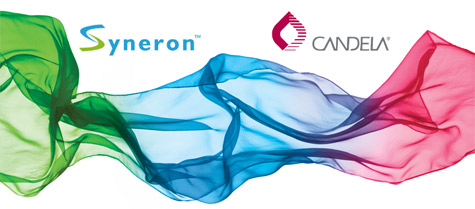 |
|---|

